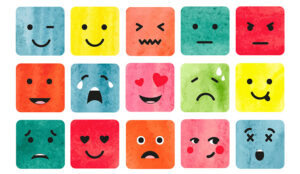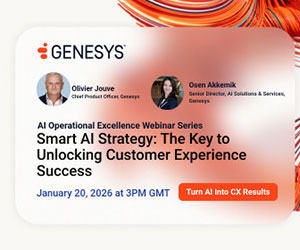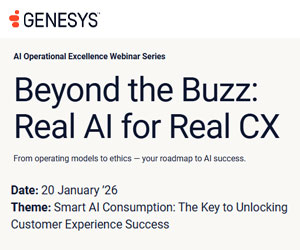Some businesses look at the bottom line with customers. Companies that are and will be most successful going forward will optimize something besides margins and profits: The Net Emotional Value.
What is the NEV?
The Net Emotional Value (NEV) refers to the single number that represents the emotional value you provide to your customers. To calculate the NEV, we determine the balance between the positive and negative emotions a Customer feels about their experience with your organization. The “Net” in NEV refers to the net effect of those emotions for customer loyalty and retention.
But what are these emotions? When I wrote my book, The DNA of Customer Experience: How emotions drive value (Palgrave Macmillan, 2007), we worked with the London Business School and the Chair of Consumer Psychology in England to determine what emotions drive value for an organization. We asked thousands of people millions of questions to determine 20 emotions created what we call a Hierarchy of Emotional Value:
Beyond Philosophy’s Hierarchy of Emotional Value
As you can see, some of the emotions drive a short-term spend while others drive a long-term spend. Furthermore, you can tell by the emotions and their grouping how they drive value in either direction.
Why Is the NEV Relevant Today?
NEV is important to know about your business because it shows how you are doing with your Customer Experience. The philosophy behind it represents the understanding that over half of your Customer Experience is emotional, sometimes at a conscious level and sometimes at a subconscious one. These emotional reactions occur throughout a customer’s journey, on a moment-to-moment basis.
There will be negative moments and positive moments in any Customer Experience. Organizations should work to provide an experience where the positive emotions (any of those in the top three segments of the hierarchy) will outweigh the negative (the bottom). By focusing on tipping the balance toward the positive, you bring those customers back again, because they valued how you made them feel. The result is your business grows and so do your profits.
Some people reading this will be skeptical. They believe that emotions in business might be significant, but not as important as having a great product at a fair price and a price that has plenty of margin in it.
They are right about part of that thinking. You should have an excellent product at a fair price with plenty of margin for it. Those concepts haven’t changed. What has changed in business today is that this is not enough. Competition has expanded to include a global marketplace and the barriers to entry have begun to fail, making it far easier for your competitors to offer a comparable product quickly.
It’s not hard to see that the old way of doing business isn’t enough to be competitive anymore. To be competitive today, you have to have a great product at a fair price that has an excellent Customer Experience.
The Difference Between the NEV and NPS
Most organizations that have already accepted that the Customer Experience is the competitive differentiator have adopted the Net Promoter Score (NPS) as the metric by which they measure their success. The NPS is an excellent way to measure the customer’s opinion of your Customer Experience as it predicts how likely they are to recommend you to others. I am sure we can all agree that none of us would recommend a product or service that we felt was a horrible experience!
However, the NPS score as a metric has plateaued for many organizations. This plateau is the result of many factors, not the least of which is that the easy things have been done to improve Customer Experience. To move the needle further on NPS, one needs to get down to the real work of improving a Customer Experience. This “real work” includes understanding the hidden reasons customers do what they do, the psychological experiences that drive their behavior in your experience. This is the topic of my new book, The Intuitive Customer (Palgrave Macmillan, 2016).
The NPS is a great metric, but it is limited. The NEV is the new way to define success for your Customer Experience. The NPS only tells you an overview of whether or not the customer approves of your Customer Experience. The NEV, on the other hand, shows the specifics of what’s working and when. It not only shows you where you need improvement, but it also shows you what you are doing right.
The NPS is still important. In fact, our research shows that when the NEV is high, the NPS is too. All this to say that I don’t think any organization should drop the NPS as their metric anytime soon. I only suggest that they take their analysis to the next level with the NEV.
Calculating the NEV Is Simple
The new calculation isn’t complicated. In fact, it’s quite simple. It requires you to determine the average positive emotions (from the Hierarchy) and subtract the average negative emotions (also from the Hierarchy). The result is the NEV. It can be a positive or negative number, too.
Calculating the NEV Is Simple
Of course, I realize this is a very simplified version of a real world process that would require research and data analysis. However, these are not complicated either – especially since we already determined which emotions drive value for an organization in our research for the hierarchy.
The fact is emotions matter in Customer Experience. They matter enough that every team should be working to evoke the right ones. However, unless you measure your progress, you won’t know if you are. The NEV can help you see what’s happening in your Customer Experience at an emotional level, and how to make it the competitive differentiator that you need it to be.
Don’t you think it’s time you knew what is going on in your Customer Experience?
Author: Colin Shaw
Published On: 21st Apr 2016 - Last modified: 14th Nov 2024
Read more about - Guest Blogs, Positive Words





































